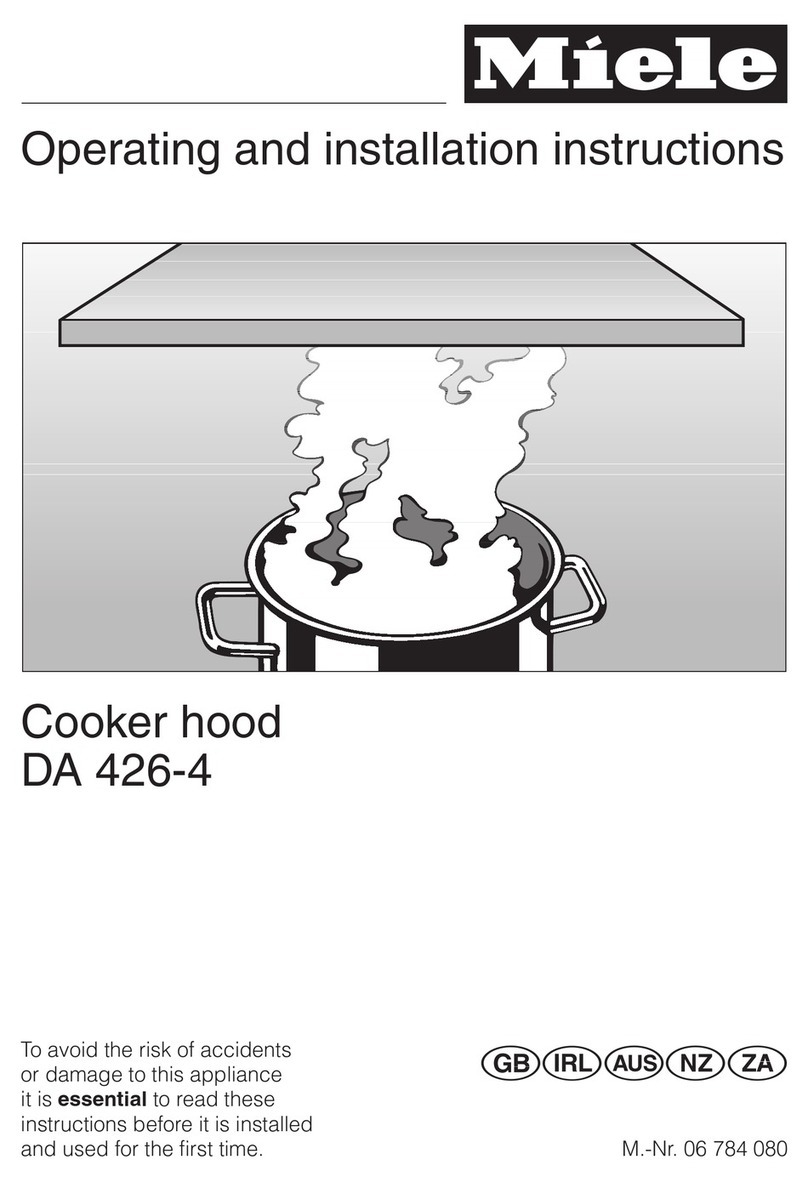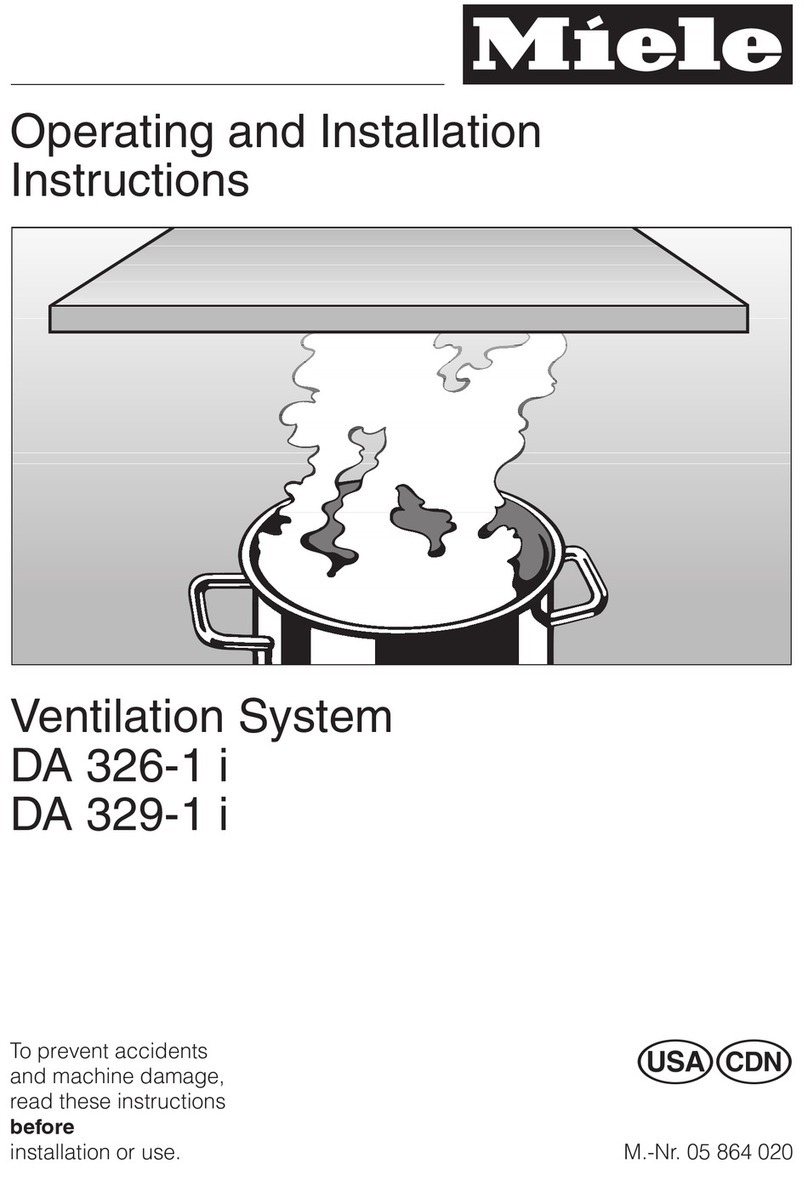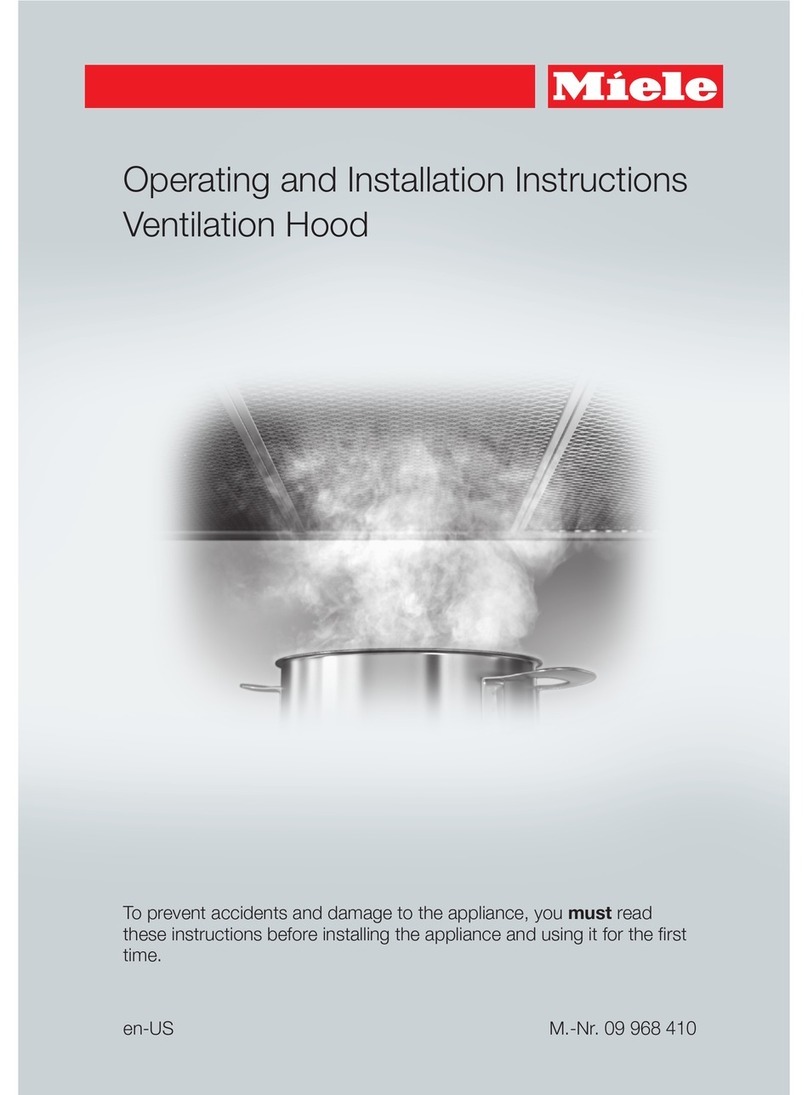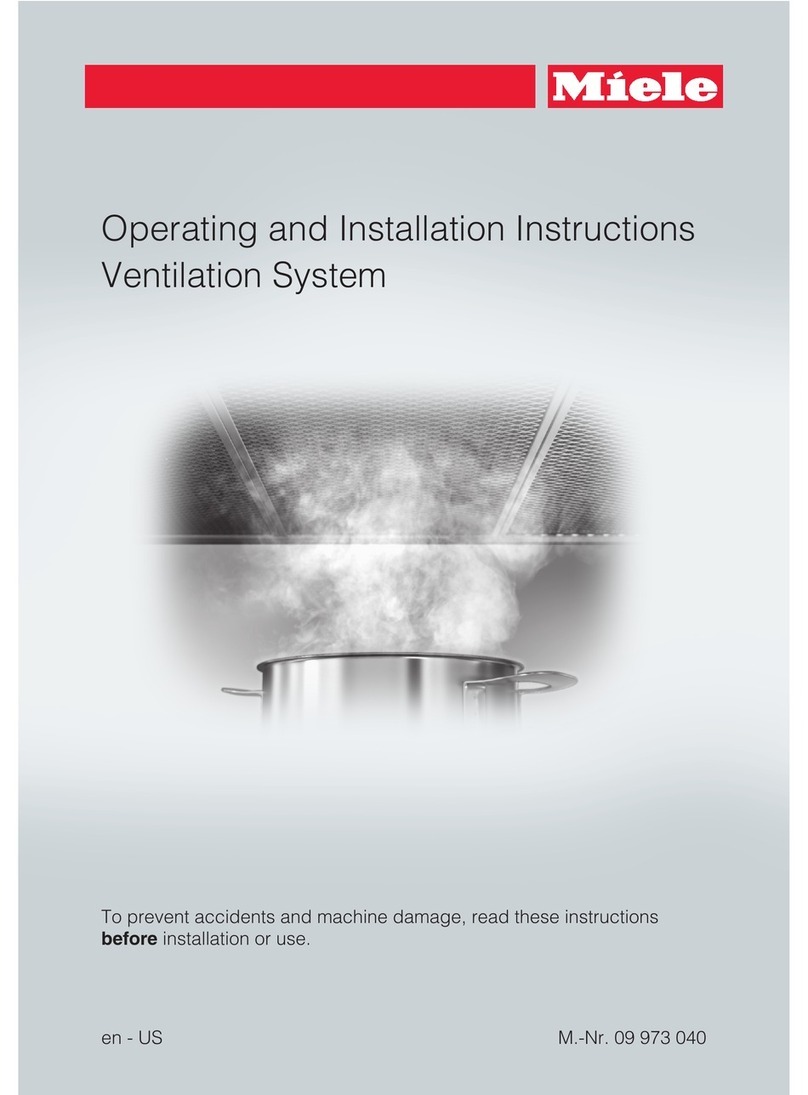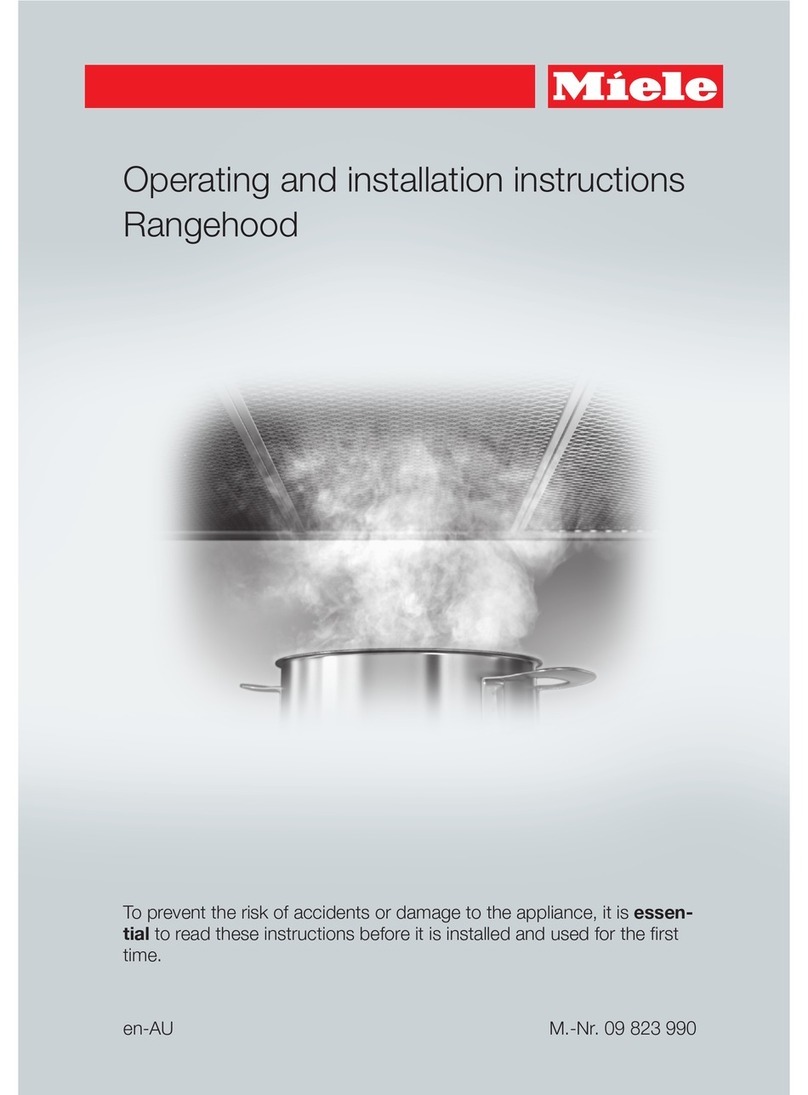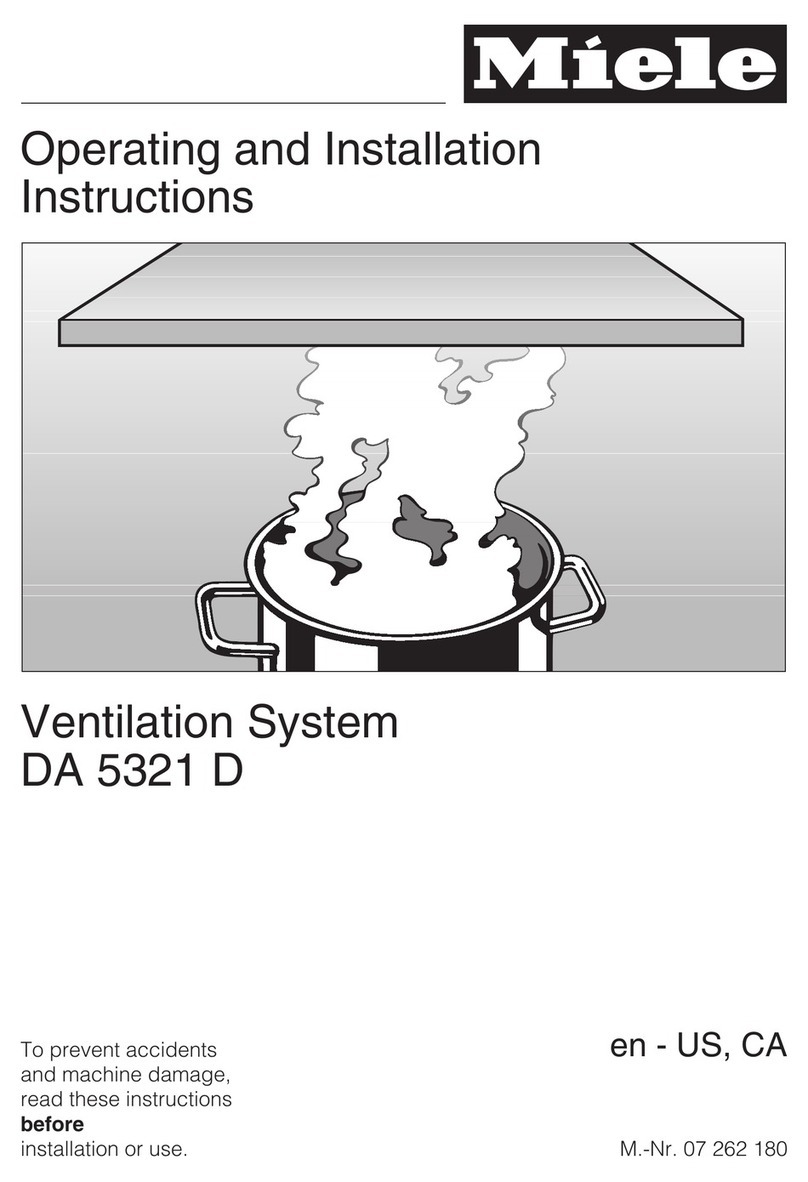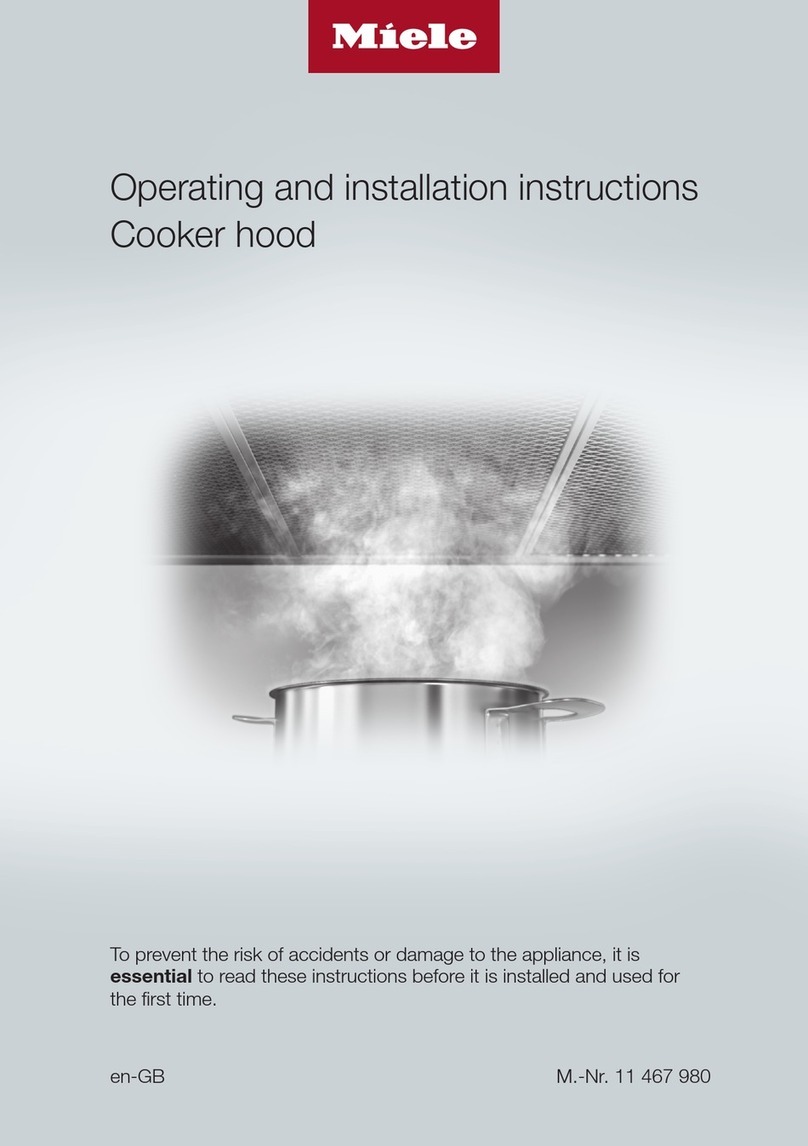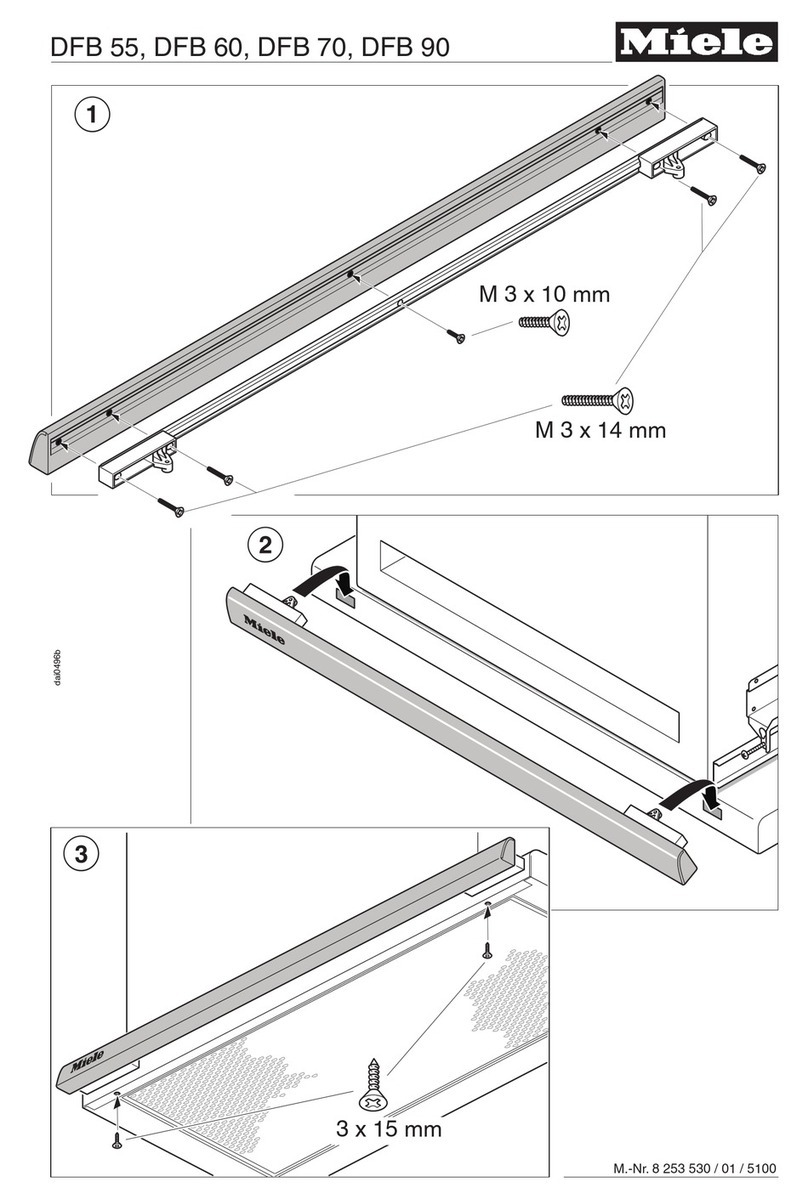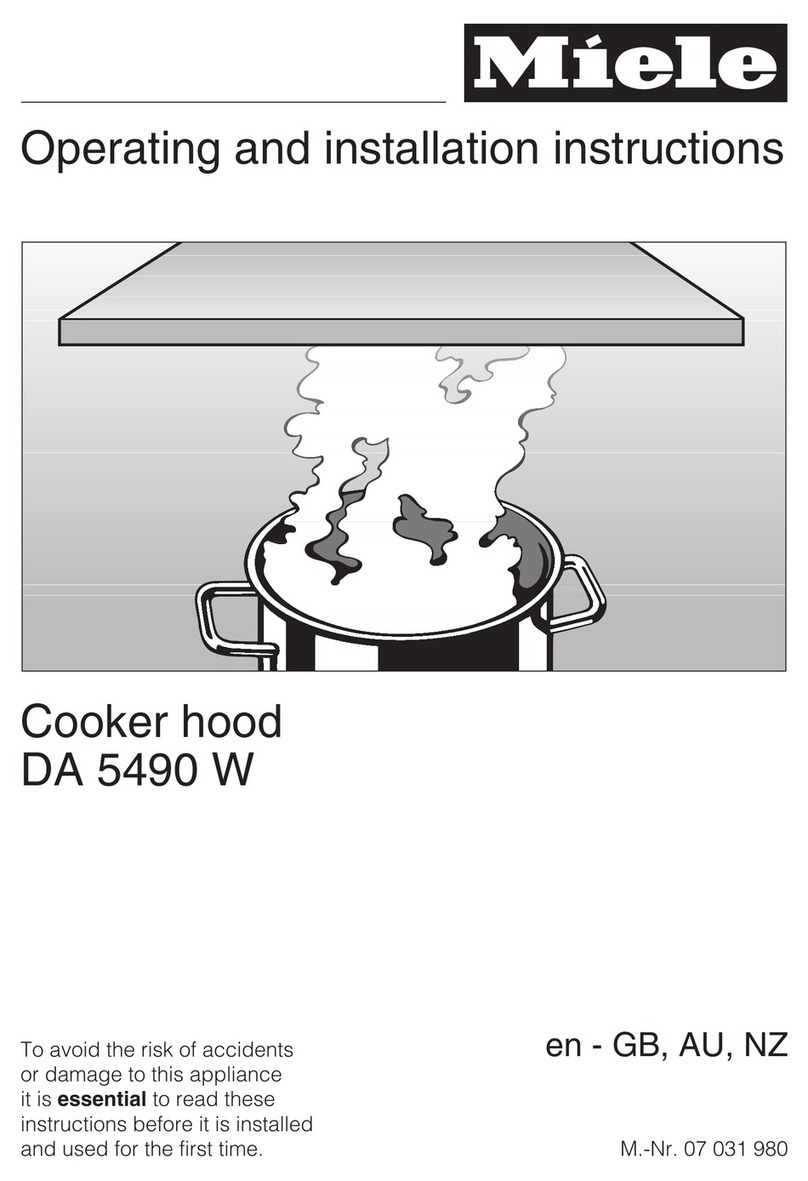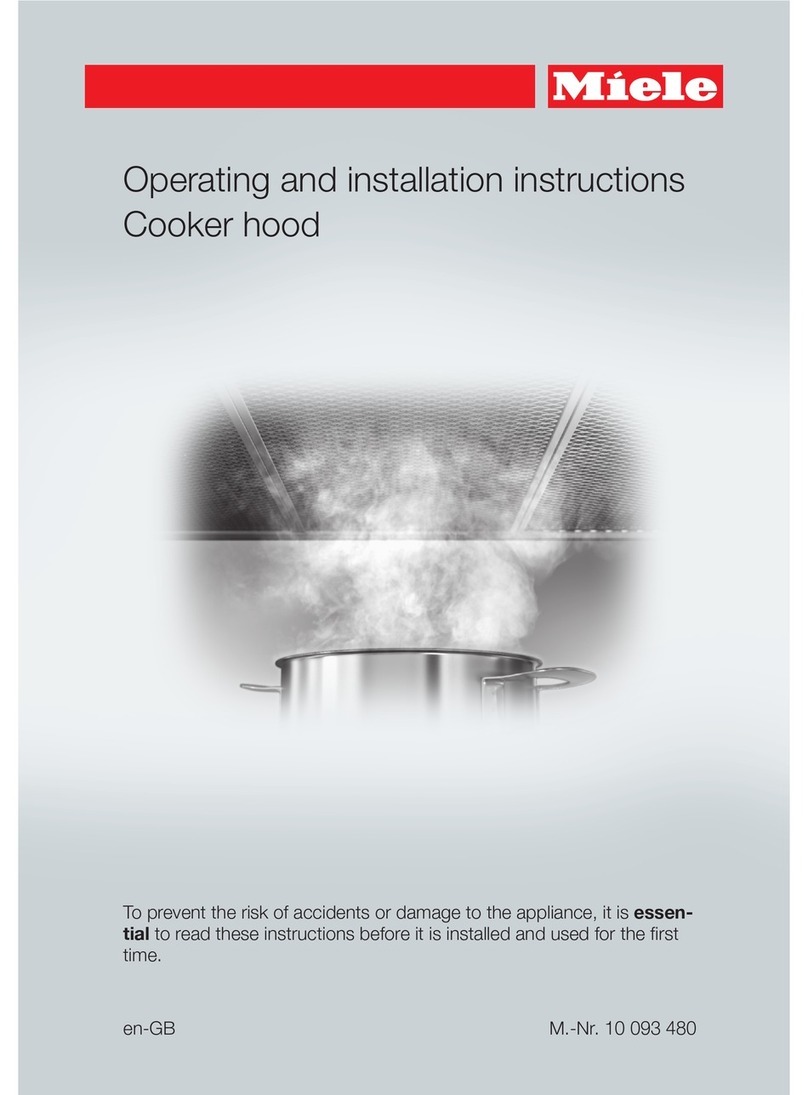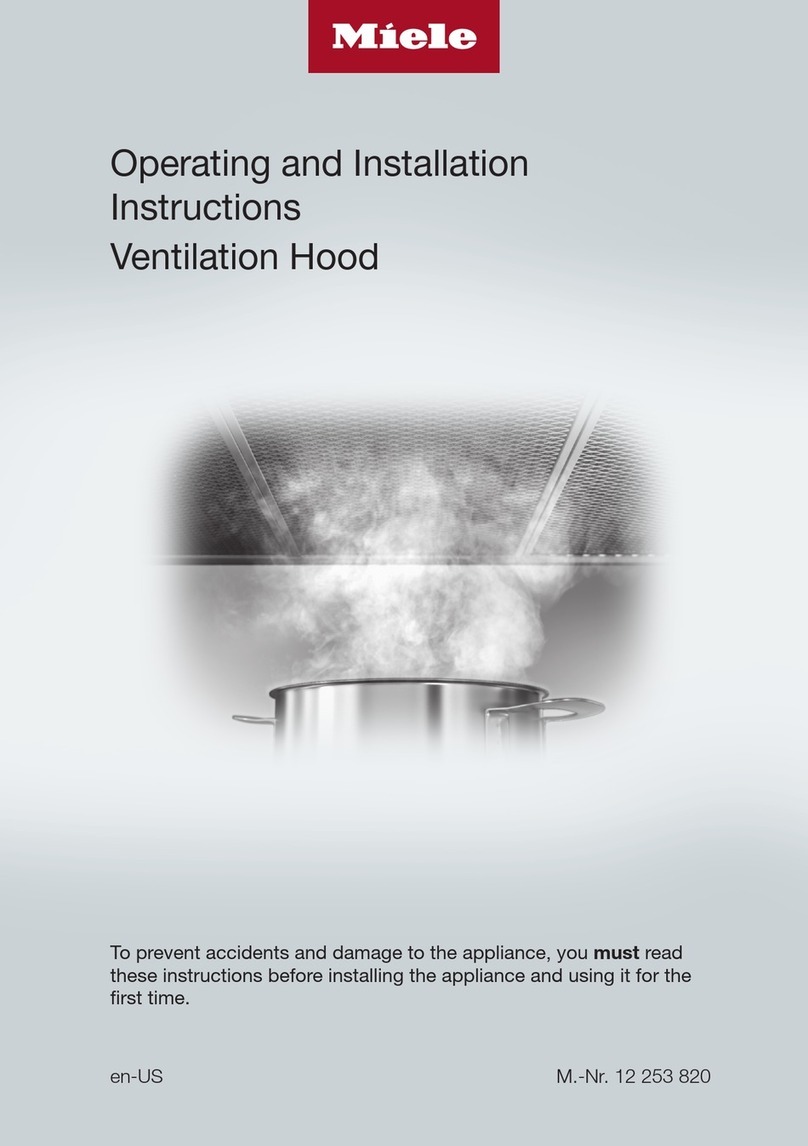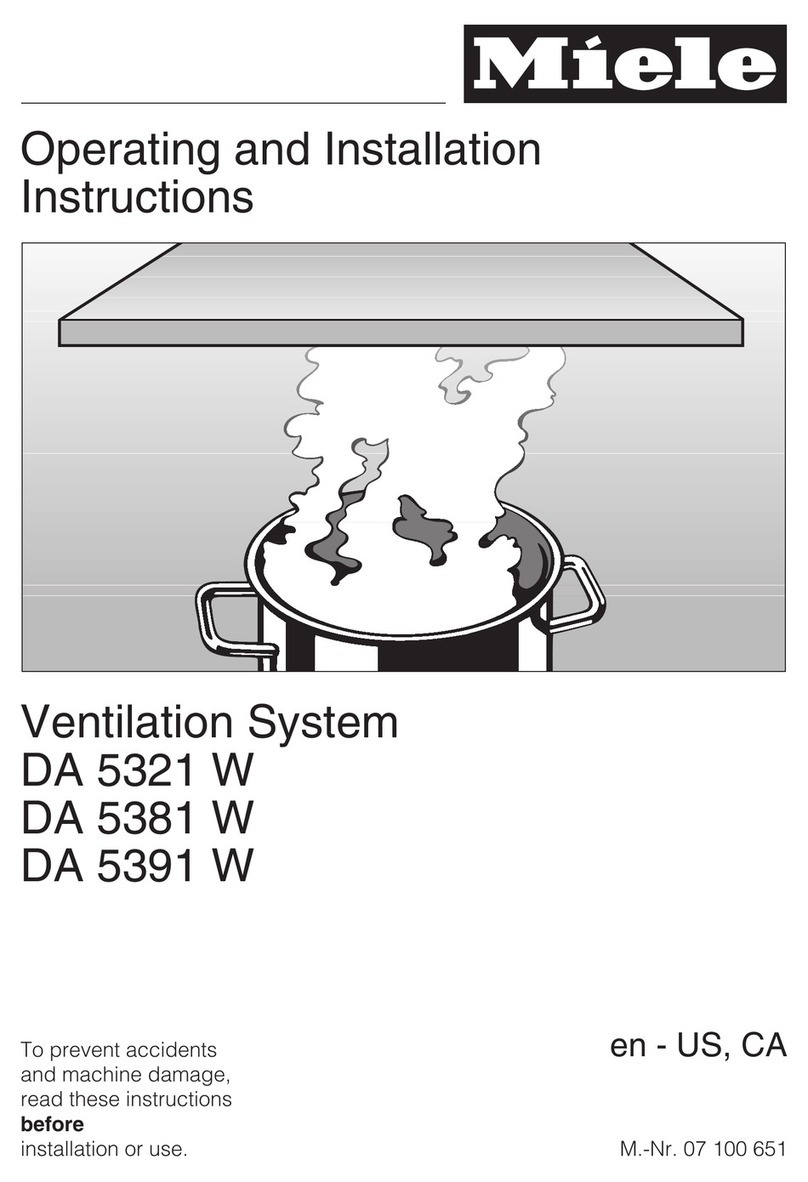The appliance is only completely
isolated from the electricity supply
when:
– it is switched off at the wall socket
and the plug removed. (Do not pull
on the cable, only on the plug), or
– the fuse from the fused spur connec-
tion unit is withdrawn or,
– the mains fuse is withdrawn, or
– the screw-out fuse is removed in
countries where this is applicable.
Ensure power is not supplied to
the appliance while maintenance
or repair work is being carried out.
Do not connect the appliance to
the mains electricity supply by an
extension lead.
Extension leads do not guarantee the
required safety of the appliance, (e.g.
danger of overheating).
Use
Do not let small children play with
the appliance or its controls or
operate it. Supervise its use by the el-
derly or infirm.
Never use an open flame beneath
the cooker hood. To avoid the
danger of fire, do not flambé or grill
over an open flame.
When switched on, the cooker hood
could draw flames into the filter. Fat par-
ticles drawn into the cooker hood pres-
ent a fire hazard.
When using the cooker hood over
a gas hob ensure that any burners
in use are always covered by a pan.
Otherwise flames could be drawn up
by the suction of the cooker hood,
parts of which could then be damaged.
Always switch the cooker hood on
when using the hob, otherwise con-
densation may collect in the hood,
which could cause corrosion.
When cooking with oil or fat, chip
pans and deep fat fryers etc, do
not leave the pans unattended. Never
leave an open grill unattended when
grilling. Overheated oil and fat can ig-
nite and could set the cooker hood on
fire.
Do not use the cooker hood with-
out the grease filters in place.
This way you will avoid the risk of
grease and dirt getting into the ap-
pliance and hindering its smooth oper-
ation.
The filters should be regularly
cleaned or changed as appropri-
ate. Saturated filters are a fire hazard.
Under no circumstances use a
steam cleaner to clean this ap-
pliance. Pressurised steam could
reach the electrical components and
cause a short circuit.
In countries where there are areas
which may be subject to infesta-
tion by cockroaches or other vermin,
pay particular attention to keeping the
appliance and its surroundings in a
clean condition at all times. Any dam-
age which may be caused by cock-
roaches or other vermin will not be
covered by the appliance guarantee.
Warning and Safety instructions
5
